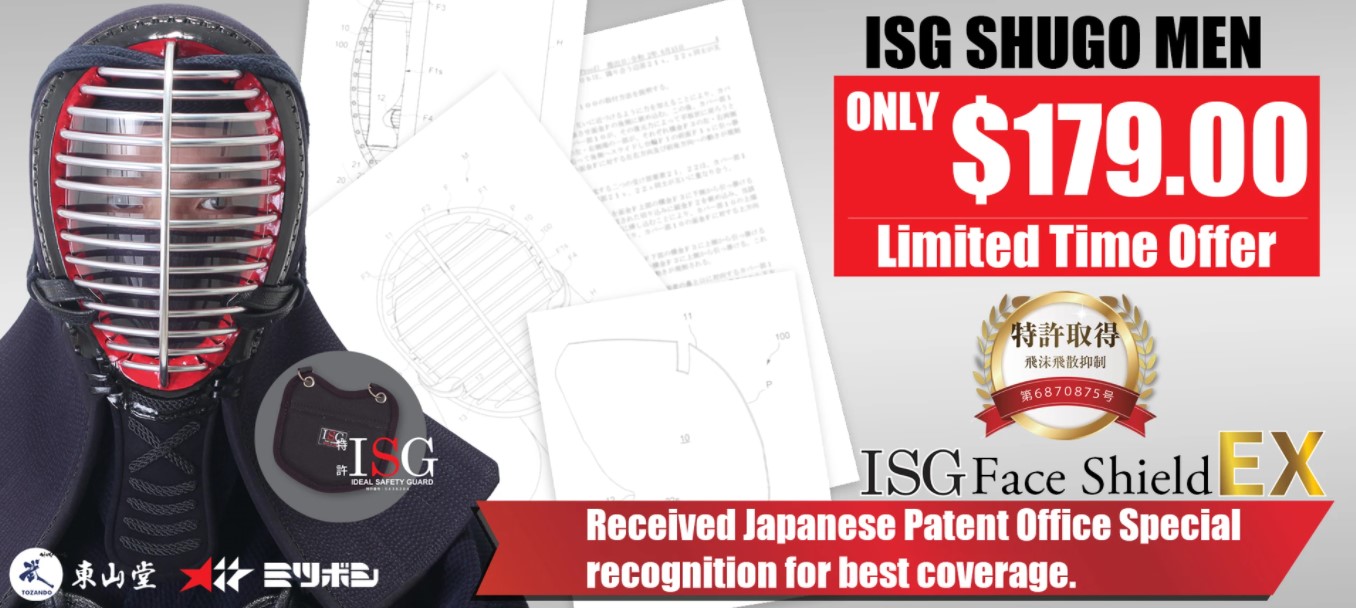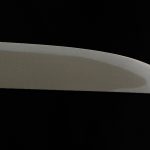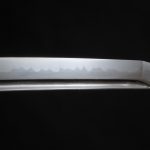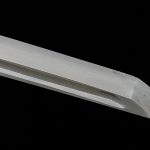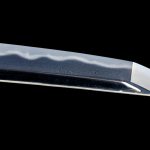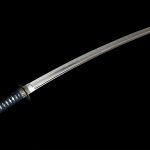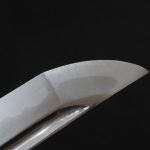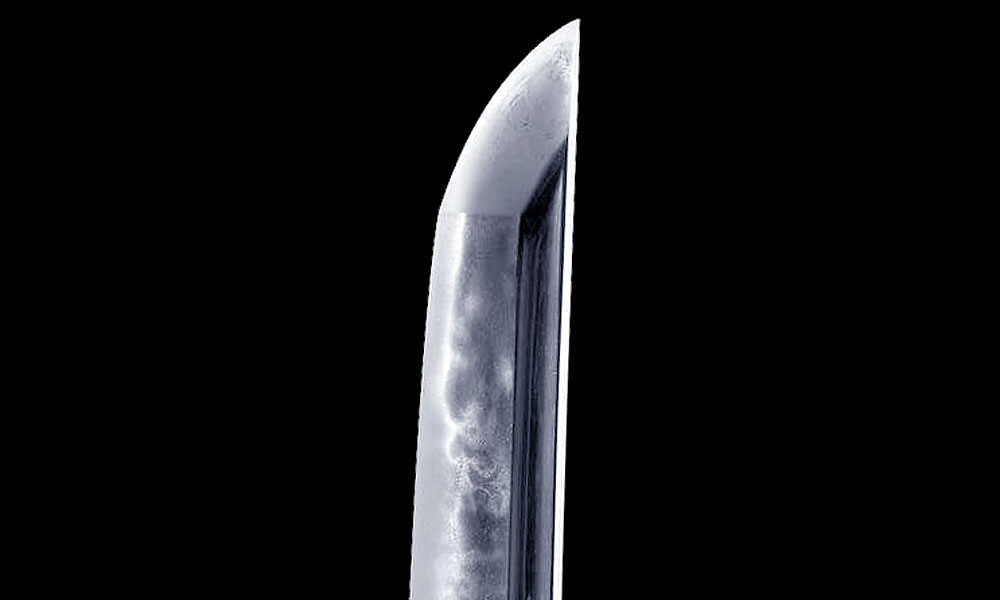
Nihontō (日本刀; Japanese sword) refers to the traditional swords that are made in Japan, perhaps more commonly known as the Katana, or Samurai sword. On the finished blade, which is painstakingly made by infusing the spirit of the swordsmith into a piece of steel and then carefully polished to perfection, one can see intricate grain patterns emerging from the surface of the steel that we call Hada (肌; grain), and also on the edge of the blade you can see the Hamon (刃文; blade pattern) which is the pattern created by the differentially hardened blade edge during the tempering process.
When appreciating a Japanese sword you look after these kind of defining features among others on the sword. But you don’t have to be an expert to enjoy looking at a sword, so in this article we have created a short summary of where and what you should be looking for when you appreciate a Japanese sword. Nihontō (日本刀; Japanese sword) refers to the traditional swords that are made in Japan, perhaps more commonly known as the Katana, or Samurai sword.
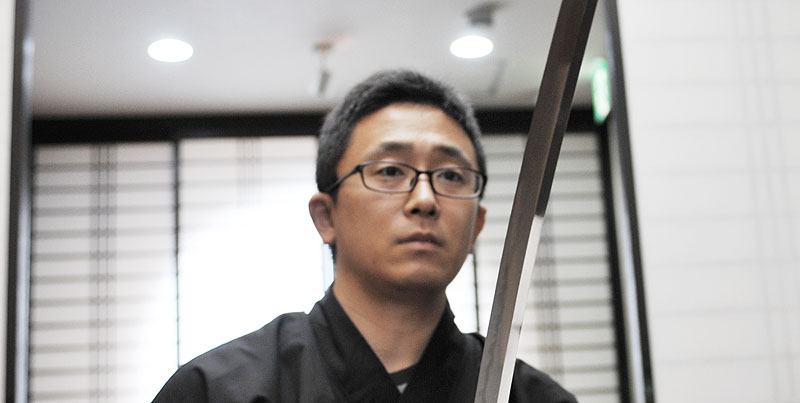
On the finished blade, which is painstakingly made by infusing the spirit of the swordsmith into a piece of steel and then carefully polished to perfection, one can see intricate grain patterns emerging from the surface of the steel that we call Hada (肌; grain), and also on the edge of the blade you can see the Hamon (刃文; blade pattern) which is the pattern created by the differentially hardened blade edge during the tempering process. When appreciating a Japanese sword you look after these kind of defining features among others on the sword.
But you don’t have to be an expert to enjoy looking at a sword, so in this article we have created a short summary of where and what you should be looking for when you appreciate a Japanese sword.
Look at the overall appearance and shape

All Japanese swords have unique profiles as no blade is structurally the same as another. By looking at the defining features such as the shape of the Sori (反り; curvature) and Kissaki (切先; sword tip), Mihaba (身幅; blade width), Nakago (茎; tang) and so on, you can determine approximately when the sword was made. Depending the preferred combat method, lifestyle and customs of that particular time, the shape and thereafter the function of the sword would also change accordingly.
When apprising a Japanese sword there is a saying that goes “First the shape, secondly the Jigane (地鉄; steel) and thirdly the Hamon”, this shows how important it is to study the shape of the sword. The characteristics of things like the Shinogi (鎬; ridge) of the sword is also interesting, but needs a bit more knowledge to appreciate.
Look at the Jigane and Jihada
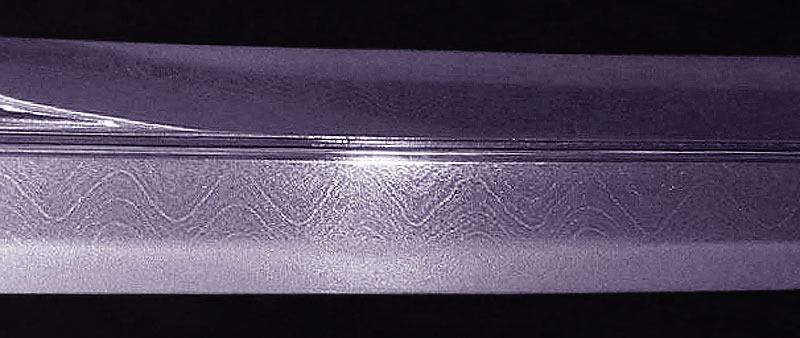
The Jigane is the blackish part on the sword blade which does not have any tempering is called Jigane. Repeatedly folding and forging the iron with great care, creates a delicate pattern on the surface of the steel which is categorized and named according to the specific color and pattern that appears. The color of the steel also has specific features and characteristics depending on the period or the school of the swordsmith.
The manifestation of the Jihada (地肌; grain) also varies and is another important element to look at. Broadly speaking, the grain can be divided into five different categories, Mokume-hada (杢目肌; burl grain), Itame-hada (板目肌; wood grain), Masame-hada (柾目肌; straight grain ), Ayasugi-hada (綾杉肌; flowing cedar/wave grain), and Muji-hada (無地肌; plain grain). Although it should be noted that many times a combination or variation of these styles can be seen in a sword.
Look at the Hamon
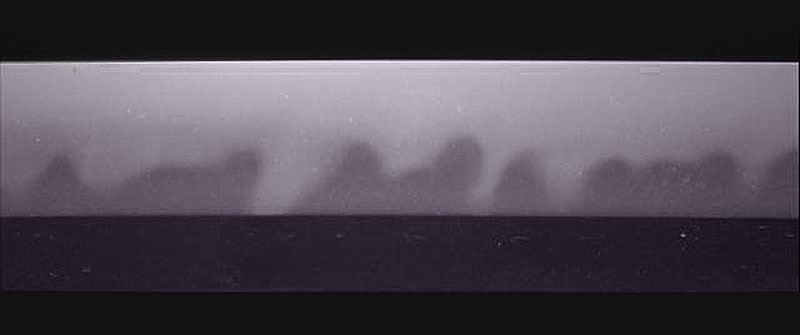
The Hamon is the white colored pattern that manifests on the edge of the blade during the tempering and quenching process, due to the differential hardening of the blade caused by clay which has been put on the edge on the blade by the swordsmith before quenching it, creating a beautiful tempering pattern as a result. Each school and swordsmith has their own unique patterns and this is another important clue when you appreciate and apprise a Japanese sword.
At the border of the Hamon you can also observe what we call Nie (沸; seething) and Nioi (匂; scent) which are small crystalline particles that appear due to the tempering of the blade. Nie is distinguishable particles that looks like twinkling stars, possible to discern with the naked eye. Nioi on the other hand is like a mist that has no individually distinguishable particles. Both Nie and Nioi can be used to determine the period or the region in which the sword was made.
Look at the signature

The Nakago on a Japanese sword is sometimes inscribed with the name of the swordsmith, the date or season that the sword was made, and even the name of its owner, this is called the Mei (銘; signature). The signature of the sword is another important point when appreciating the sword and holds the key to understanding and finding out more about your sword.
Look at the decorative cravings
Sometimes, the blade maybe have intricate decorative cravings applied on to them.Some of the more popular motifs are Bonji (梵字; Sanskrit characters), Kongōsho (金剛杵; Varja), Fudō Myō-ō (不動明王; Acala), Kukikara Ryū (倶利伽羅竜; Kukikara dragon) and so on. Although the examples here are all deeply connected to Buddhist and religious thoughts and beliefs, as the times changed, many more purely decorative motifs were also used for Japanese swords. The Hi groove, also sometimes known as the “blood groove” can also be said to be a type of craving, contrary to popular belief its purpose was not to make it easier for blood flow off the blade to keep it clean, or increase damage, it’s original purpose was to make the sword lighter and making it stronger against bending. Although it originally had a very practical function, as swords with double Hi grooves were made the Hi groove it become more of a decorative craving.
When appreciating a sword, do not judge the sword based on the name of the swordsmith, instead you should start with learning about the history, school, and cultural background of the sword. It’s important to appreciate the sword as if it was your last chance to cast your eyes on it, to “live every moment as if it was your last”, if you look at the sword with such an earnest feeling, you will naturally be able to notice the finer details of the sword and memorize the know-how needed to appraise a Japanese sword.




